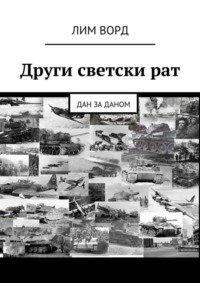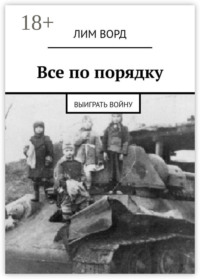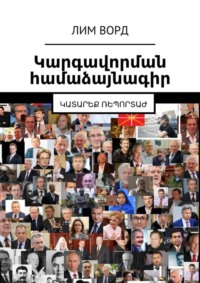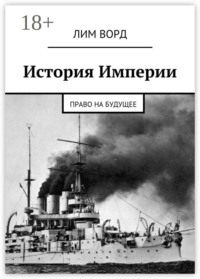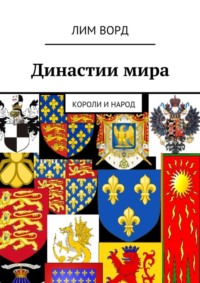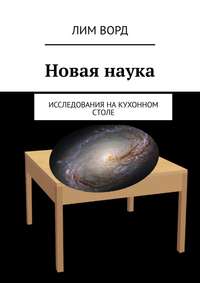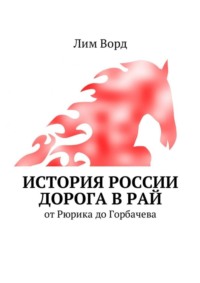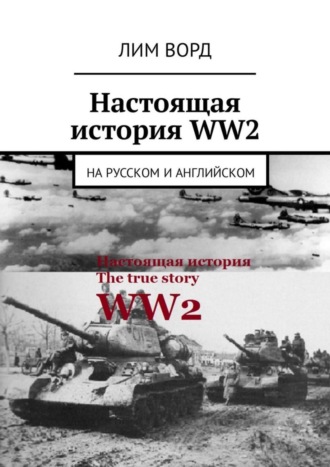
Полная версия
Настоящая история WW2. На русском и английском
1. I-15
2. I-16
3. Bf. (Me) – 109, Series B (Bruno)
4. Heinkel 51
1. I-15 (Chato – «Pug-nosed»), a half-plane (the lower wing has a much smaller area) Polikarpova, four 7, 62 mm. machine gun, the speed of 370 km. h, the flight range is 750 km. On its basis, I-153 was created, a deep modernization of the I-15, «Seagull. Introduced retractable landing gear, appeared armored bump, the steel forms are more streamlined. Armament: four 7.62 mm. machine gun, 8 unguided missiles with 82 mm. shells, up to 200 kg. bombs. The speed is 410—430 km. h. The range of flight is 740 km. Put into operation by 1939 (after the war in Spain), quite successfully participated in the conflict at Halkin Gol. In the Finnish war proved to be mediocre. In the hot summer of 1941 it became finally clear that the development of the idea of biplanes, in addition to the short fuselage, of the wobbling «fatties» – Polikarpov’s big mistake. From 1939 to 1941, 3,427 aircraft were produced.
2. I-16 (nickname in the USSR – Ishak, Yastrebok, Spanish army, Franco – Rata – agile rapacious «Rat», Republicans «Mosca» – «Fly», in China – «Yanzi» – «The Swallow»). The first fighter is a low-grade aircraft in the USSR. Armament – four 7.62 mm. the ShKAS machine gun (the Shpitalniy and Komaritsky system, for the first time in the world, the rate of fire is 1,800 rounds per minute) or two 20 mm. guns and two 7.62 mm. machine gun. The speed at altitude is 450 km. h. The range of flight is 520 km. This is the maximum performance of an airplane with a single-row, star-shaped engine. The lantern of the cockpit can be closed completely, however, due to frequent seizures, the pilots keep it open (as can be seen in almost all the photographs). By 1942 inclusive (83 aircraft in the last year) produced 10 300 copies (not counting a few dozen, manufactured in Spain and China). Together with the «Seagull» brutal I-16 was the backbone of Soviet fighter aviation to the beginning of the Great Patriotic War. Led by an experienced pilot, he was not an easy prey, he tried to avoid maneuvering with him the aces of the Luftwaffe, saying that, they say; «You should not drive a rat into a corner.» However, the time I-16 passed.
3. Bf. (Me) – 109, Series B (Bruno), a fighter, was supplied to the Francoists in the second half of the Civil War. At that time had three 7.92 mm. machine gun. By the beginning of the Second World War Me-109 got four machine guns, or, in the other series, two machine guns plus 30 mm. a cannon with 60 shells. As an attack aircraft, he carried one 250 kg. the bomb. Speed – before modernization, during the war in Spain only 470 km. h, but by 1939, after replacing the engine (which became an unpleasant surprise, primarily for the British Air Force) – 570 km. h. In the mid-forties, its speed reached 620 km. h. The range of the flight is 480 km. In total, from 1937 to 1945, 34,000 Messerschmitts were produced.
4. Heinkel 51, the fighter of the Frankish first half of the war. Virtually had no chance against I-15. Armament – two machine guns 7,92 mm., Speed 310 km. h, flight range 550 km.
The rebels are changing the direction of the main attack and are crashing to the north of Spain – the Basque Country. April 26 German pilots destroy the city of Guernica. Strengthens his dictatorship Franco – his party «Spanish Phalanx» gets rid of internal opposition. At this time, the official Spanish government, which wants to achieve stability, completely purposely replaces a number of ministers. A single strong leader does not appear. The Republican army exhausts forces in fruitless frontal attacks of insignificant objects.
Organized according to the Stalinist patterns of the security service of the Republic, is being dealt with by prominent figures of the Marxist Party of Spain (Spanish POUM), is developing mass blind terror. Many Spanish Communists, as well as arrivals from all over the world interbrigadovtsy begin to get disappointed in their work, their morale is rapidly falling. The last successes Republicans achieve at the beginning of the offensive at the city of Brunet; (just west of the center of Spain), then they become entangled in contradictory orders, lose 25 thousand people against 10 thousand from the enemy, and together with them the original unity. On August 18, the republican units leave the front. 60,000 people are captured.
Italian submarines arrange a hunt for ships that supply goods still fighting in other theaters of military operations, Republicans. In early September, there is a sea battle; The Frankish flagship gets seriously damaged and departs from the convoy. Encouraged by this, insignificant in essence, success, the Republicans decide to hold a decisive offensive on land (Zaragoza, northeast of Spain). And again, their 80,000-strong group drains itself in unsuccessful attacks of secondary settlements, and then produces personnel personnel permutations that are also unnecessary to anyone. In early October, a new attempt is made to take Zaragoza. The main hope now is for 50 Soviet high-speed BT-5 tanks. Nationalists open floodgates of irrigation canals. Tanks bypass the appeared lakes, get bogged down in the mud, or far away from the accompanying infantry. The battle ends on October 17. Republicans lose 30,000 people killed and wounded, more than 30 tanks, francists – 20,000 people.
1. BT-5
2. Waddress CV3 / 33 (Carro veloce CV-33 «Ansaldo»)
3. T-26
4. ANT-25
1. Wheel-caterpillar BT-5. Armament: 45 mm. gun, 115 shells, paired with a cannon 7.62 machine gun. Booking: the forehead, the side of the body 13 mm., The forehead, the side of the tower 13 mm. The speed along the highway is 52 km. h on caterpillars, 72 km. h on wheels. Crew of 3 people. Weight 11 tons. Power reserve on the highway on tracks 150 km, wheels – 200 km.; while the rubber rim wears out after 150 km. mileage. The specific power is 35 hp. (higher than that of modern tanks). Ground pressure 0, 65 kg. see with clad caterpillars, 5.65 kg. see on wheels. The number of vehicles produced from 1933 to 1934 – 1880. Most of the tanks lost in the first months of the war. Since 1942, the machines have basically been transferred to the rear, as training, a certain number of BT-5 has survived until 1945, participating, among other things, in defeating the Kwantung Army.
2. Waddress CV3 / 33 (Carro veloce CV-33), otherwise, by the name of the company – «Ansaldo». Armament: two 6.5 mm. machine gun. Booking: the forehead of the case is 15 mm., The board is 9 mm, the forehead of the felling is 15 mm, the board is felling 9 mm. Crew 2 people. Weight 3,5 tons. The speed along the highway is 42 km. h. The power reserve is 150 km. Specific power 12 hp There are 1400 copies produced.
3. T-26. Photo of the consequences of the late (1941) tank battle for Dubno-Lutsk-Brody. The first serial classic Soviet tank, which took part in many battles, was put into operation after many problems with non-working engines and assembly of hulls (including unarmored steel). Difficulties were removed after manufacturers were allowed to introduce changes into the original scheme related to the peculiarity of domestic technology, changes. Armament: the first series – 37-mm gun, 7, 62 mm. a machine gun in two towers, then, in a single-tower version of 45 mm. gun, two 7, 62 machine guns. Booking bulletproof: the forehead, the side of the body 15 mm., The forehead, the side of the tower 15 mm. The crew is three people. Weight 8 tons. Speed along the highway is 30 km. h, the power reserve is 120 km. I received the approving comments of the veterans of the Great Patriotic War – «for our time a good tank, without it we would have to be very difficult.» Prototype – English (two towers) six-ton «Vickers». Despite some difference in the reservation, he could hit his opponent, the German T-3 is almost as confident as he is his. But, the practical training of a Soviet tankman on a tank-boat is 6.5 hours (sometimes 300 meters, straight, and back to the hangar), German – 50—120 hours (practically, the armored car resource is burnt).
From 1931 to 1941, 11218 T-26 (half of the Soviet tank fleet at the beginning of the war) were assembled.
4. ANT-25. The aircraft, created in the USSR specifically for the establishment of world records (1933). The maximum flight duration is 75 hours, the range is 12 411 km., The speed is 240 km. h. Crew of three people. The military version is DB-1 (ANT-36), the cruising speed is 200 km. h, bomb load 1000 kg., combat radius of 2000 km. In this form, 24 cars were built, the air was rarely raised, and finally they were used as targets at the airfield.
June 18, 1937 ANT-25 with a crew from V. Chkalov, G. Baidukov, A. Belyakov takes off from the airfield Shchelkov (30 km from the capital) and makes a flight on the route Moscow-North Pole-United States of America. The landing takes place at Pearson Airfield, Vancouver, Washington (north-west of the USA), with a huge crowd of people. Later, the aircraft in disassembled form, on the ship gets back to the USSR, by our time finds shelter in the museum of Nizhny Novgorod. His double, who also flew to America, already under the control of the crew of M. Gromov, now resides in the museum of Chkalovsk (Schelkovo).
Due to his charisma V. Chkalov establishes a warm, trusting relationship with the Americans.
Returned back, became a world-class pilot, on the ship «Normandy», by coincidence, with the legend of the screen Marlene Dietrich, a German and American actress. Chkalov gives her bouquets of flowers, provides signs of attention, etc., up to the point where a steady rumor of a novel arises.
One thing is clear: such things as «soft power», records simply for the sake of records are often much more important for the security of the country than piles of expensive weapons and loud statements that «we will all beat you,» or: «Our friends – only the Army and Navy». The ANT-25 voyage contributed a lot to the creation of a favorable atmosphere for solving the issue of large-scale Lend-Lease deliveries in the critical year 1941 – without which, perhaps, the USSR would have lost the war.
After this, the Nationalists deploy an offensive in the North of Spain (the province of Asturias). Francists – 40 000 people, 100 units of armored vehicles, 250 aircraft, 250 guns, Republicans – 40 000 fighters, several self-made tanks, 20 aircraft, 80 guns. Nationalists apply their technique and human resources skillfully, without unnecessary losses, and achieve success. Their losses – 10 000 killed, against 30 000 irrevocable human losses of the enemy. But most importantly – the Republicans do not work the economy. The Communist leveling is negatively perceived by both farmers and highly skilled workers, not to mention the nominal owners of enterprises. Peasants do not care who levies from them an increased rent for land – landlords or bearers of bright ideals. Working committees eat government loans, hold rallies on any occasion, do not produce weapons for the army, preferring to him any useful, quickly sold goods. The salary of a militia fighter is 10 pesetas (plus food). In 1937, food prices rose sharply, albeit unevenly in different regions of the country. Kilogram of beef in Madrid costs 5, 75 pesetas, a dozen eggs 3.75, but also for these prices set by the republican government, it is almost impossible to «get it».
To top it off, the disappointed USSR and France recall their best military specialists. In the ranks of Republicans reign defeatism.
In the spring of 1938, a major offensive of the Francoists in the north-east of the country takes place. Italian air squadrons bomb Barcelona, the provisional capital of the Republic, capture part of the autonomous Catalonia, then turn to the south and cut the territory of the Republicans in half. In June, the nationalists are trying to develop success in the south, in Valencia, but run into a well-prepared line of defense, and bear significant losses.
At the end of November, Franco agrees that German companies will own 75% of the extractive industry capital in Spain and 100% in the colonies; after which Germany resumes large-scale military supplies. The republic also purchases equipment in the USSR on preferential terms, but France, after the Munich agreement, no longer wants to enter into a conflict with the Nazis, and stops military cargo on its border.
The Franco Armed Forces – 340,000 men, 300 tanks, 500 aircraft, are against the demoralized, badly armed 200,000-strong army of the Republic in Catalonia. Republicans do not accept the fight, they already have no bright ideals and interbrigades, along with 280 thousand civilian refugees they go to France.
After this, the nationalists without resistance occupy the remaining quarter of Spain. And, on April 1, dictator Franco declares the end of the civil war.
Irrevocable losses of the parties: francists (nationalists) – 130 000 people, Republicans – 320 000.
In addition, Spain loses 510 tons of gold reserves, settling in the USSR (declaring to the Spaniards much later that it was spent on them).
On the side of the Republicans fought about 2,000 volunteers – pilots, tankmen, sailors and military advisers. In battles and from various incidents, 189 people died, 56 received the title of Hero of the Soviet Union. General Pavlov (Pablo) experienced «cleansing», defined the task of creating an exclusively caterpillar tank with a powerful large-caliber (simply – long-barreled) gun, but later, as the commander of the Western Front, swept between the broken armies and divisions, in 1941, was shot. Generals produced 22 pilots, 7 of them in the coming years were repressed. Unfortunately, their idea of replacing the unstable many cadets I-15 (and also the I-16 and the «Seagull») with a new class fighter, was perceived as alarmism, and the proper response from the supreme leadership was not found immediately. In addition, the practical The experience of the confrontation of the Spanish pilots with German aircraft, as always in this system, is strictly classified, and there is no influence on the course of combat training in the Soviet Air Force.
Mikhail Svetlov (Sheinkman) in 1926 wrote the poems «Grenada», put to music by composers of 20 countries, which became a hymn to the interbrigades, since 1956 – a cult Soviet, or rather folk song. The song is good, but, perhaps, in its minor mood, it programmed the fall of the Spanish Republic. The idea that the death of one fighter does not mean anything, the detachment of this loss simply will not notice, does not attach, if you think about it, a positive. Won not the states for which the little man should give everything, but those who are ready to sacrifice much for their citizen.
At the same time, the fascist march, the unofficial German hymn «Horst Wessel» («Banners upwards»), clearly possessing some spiritual power, shows that, they say, then their troops notice the loss of fighters, and they are invisibly marching in the ranks of the surviving storm troopers. The Republican cry – «No pasarán!» – «They will not pass» is also, definitely, passive. Nationalists replace him with their less known, but more active: "¡Pasaremos!» – «We will pass.» In the end, four days before the end of the war, dictator Francisco Franco proclaims something that is very difficult to object: «Hemos pasado» – «We have passed.»
As part of the interbrigade fought, was, among other things, George Orwell (Arthur Blair). In his famous works «1984» and «Animal Farm», he, not without bitterness, shows the degeneration of revolutionary principles, a totalitarian system based on universal fear, enslavement and denunciation.
Francis lives until 1975, after which the post of the head of the country is occupied by King Juan Carlos. The country passes to parliamentarism and constitutional monarchy.
…In March 1938 there was an anschluss, otherwise, annexation, annexation of Austria. Previously, the state apparatus of this country is full of officials receiving a second salary from Germany and pursuing the corresponding policy; At the decisive moment they give the command not to resist the invasion. As a result of the «blindfold war», without losses, the Reich receives an additional 17%, territories and 6.7 million people, as well as 1.4 billion marks in currency and gold reserves. Austria becomes an administrative unit, called «Ostmark».
After the «Munich Collusion» with one of the centers of power in Europe, Great Britain and Germany, Sudetes with all defensive structures, populated by 90% ethnic Germans, and then all of Czechoslovakia are transferred. Poland does not want to miss Soviet aircraft to help the Czech Republic. Resistance is rendered only by one garrison, with the commander of which the higher authorities did not manage to contact in time: twenty-four German soldiers were killed and wounded during a forty-minute battle. In addition to 3.5 million ethnic Germans, Germany receives Skoda factories and six hundred fully ready-to-use, fairly good 38 tanks at that time (25 mm armor, 37 mm cannon, suspension close to the Christie system). England returns to the occupied country (hence, already Germany), taken out before that for storage of gold reserves – 1.4 billion marks. Slovakia becomes an independent state after it transfers southern territories to Germany’s ally, Hungary, 87% inhabited by the Hungarians. At the height of the Sudeten crisis, Poland enters its troops in the Teshinsky region, which belongs to Czechoslovakia, where 80,000 Poles and 120,000 Czechs live.
1. Czech tank 38 (t)
2. Japanese fighter Ki-27
3. BT-7
4. Ha-Guo, Type 95
5. ANT-40 (SB)
6. TB-3 (ANT-6)
7. Nikita Fedorovich Karatsupa
1. Quite a good Czech tank 38 (t). The «pigeon people» of Czechoslovakia never let them go against the Wehrmacht. In total, the enterprises of Skoda produced 1400 of them. The crew is 3—4 people, the forehead of the body is 25 mm high, the bottom is 12 mm., The hull is 15 mm., The forehead of the tower is 25 mm., The side of the tower is 15 mm. Weight 10 tons. Gun 37 mm, ammunition 72 shells, two machine guns, speed along the highway 48 km. h, cross-country 15 km. h, a power reserve of 230 kilometers.
2. Japanese fighter Ki-27 (in the USSR it was designated as I-97). Armament: two 7.7 mm. a machine gun with 500 cartridges per barrel. The speed of the earth is 395 km. h, at an altitude of 444 km. h. The range of flight is 627 km. From 1938 to 1942 produced 3,400 units.
3. BT-7. Armament: 45 mm. gun, 172 shells, one or two machine guns 7.62 (paired with a gun and aft). Booking: forehead housing 22 mm., Board 15 mm. (plus an outer layer of 4 mm.), the forehead, the side of the tower 15 mm. The speed is 72 km. h on wheels, 52 km. h on the tracks. Power reserve, 460 km. and 375 km. respectively, Crew 3 people. Weight 14 tons. Specific power 28 hp, ground pressure 0,85 kg. see (caterpillars). When driving on wheels, the front pair of rollers becomes controllable, the rear pair driving. Crawler – the steering wheel is removed, the drive from the transmission is sent to the «stars», the control goes to the levers. The destruction of rubber bands – after about 100 km. mileage. The tank performed well in Khalkin-Gol, mediocrely – in the Winter War, differing in the worst side of the T-26 by its high fuel consumption, the noisiness, the complexity of the double drive. In the Great Patriotic War with varying success was used until 1942, after almost universally transferred to educational units. The last participation of BT-7 in military operations – the defeat of the Kwantung Army, 1945. From 1935 to 1940, 5330 vehicles were produced.
4. Ha-Guo, Type 95. Japanese light tank. Armament: 37 mm. gun, 75 shells, two 6.5 mm. machine gun. Booking: the forehead, the side of the body 12 mm., The forehead, the side of the tower 12 mm. speed on the highway 45 km. h, cross-country 25 km. h. Cruising range, respectively: 250 and 210 km. Crew of 3 people. Weight 7.5 tons. Specific power 16 hp, ground pressure 0,66 kg. See Manufactured 2300 machines.
5. ANT-40 (SB). High-speed (medium) front-line bomber, development of design bureau of AN Tupolev. Armament: four 7, 62 mm. machine gun ShKAS, 600 kg. bombs. Speed: maximum 450 km. h, cruising 375 km. h. The range is 2300 km. The crew is three people. Due to a fairly successful design, it was manufactured under license in pre-war Czechoslovakia: after annexation, all aircraft were placed at the disposal of the Reich and its satellites. Operated since 1936 in Spain, the Republican troops, where it was called «Katyusha» and (at the disposal of the francists) «Sofia», also in the Khalkin-Gol, in the Winter, Great Patriotic War.
Most of the Security Council was destroyed in the first weeks of the Great Patriotic War; In addition, the lack of armor protection for the crew and vital units, and the lack of training of the flight crew, were reflected. Further, the ANT-40 was used as night bombers, to transport saboteurs to the rear of the enemy, as well as various kinds of cargo; ammunition, food, mail, etc. 6656 units were produced.
6. TB-3 (ANT-6). Soviet heavy bomber. Armament: from 4 to 8 7.62 mm. Degtyarev’s machine guns, the bomb load – normal 2000 kg of bombs, the maximum – 5000 kg. The speed of the land is 200 km. h, at an altitude of 180 km. h. The chassis are not retracted. The flight range is 3100 kilometers. The crew of 6—8 people. Successfully applied in the battles on Khalkin Gol, for their intended purpose, day and night, with the Soviet air force in the air, also for the evacuation of the wounded (15—20 people aboard), the delivery of goods. In the Winter War proved to be mediocre. It made up 25% of the Bomb Air Force by June 22, 1941, was based deep in the rear, so it almost did not suffer from Luftwaffe attacks. When daytime bombing targets carried heavy losses, but as a night bomber proved to be the best side. The Red Army was used up to the Battle of the Kursk Bulge. From 1932 to 1938, 818 vehicles were produced, completely ANT-6 was decommissioned in 1946.
7. One of the characteristic persons of the Stalin era – border guard Nikita Fedorovich Karatsupa, Hero of the Soviet Union. Birth – the village of Alekseevka, Zaporozhye region, Ukraine. Detained 338 violators of the state border. Personally, he destroyed «129 spies and saboteurs who did not lay down their arms.» In essence, this «right man» is a maniac killer of hundreds of unarmed Russian peasants who fled the Soviet regime and the GULAG abroad, possibly trying to explain the essence of their situation to the military detainee, but not receiving any response other than smirking or bullets.
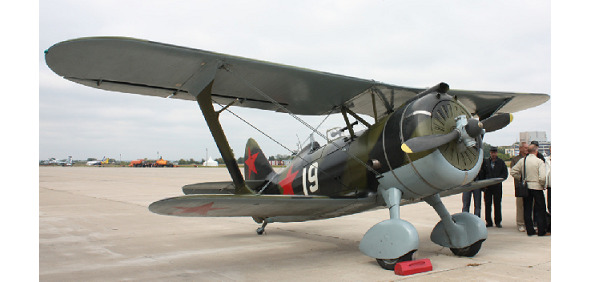
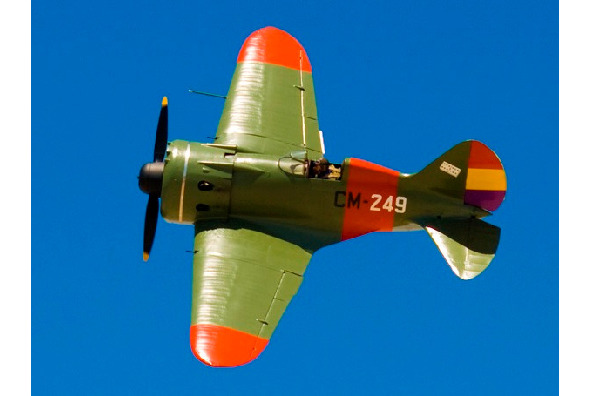

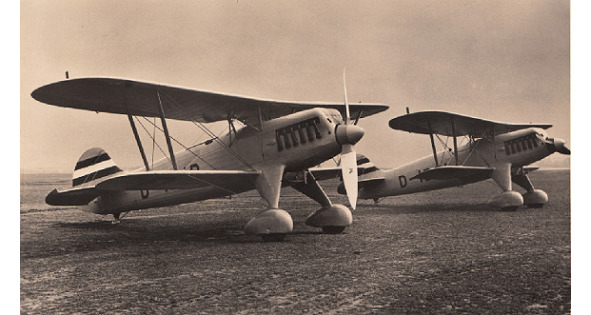
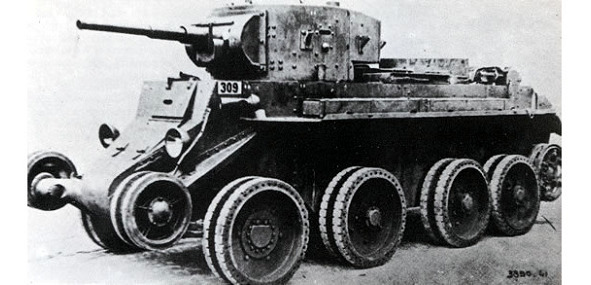
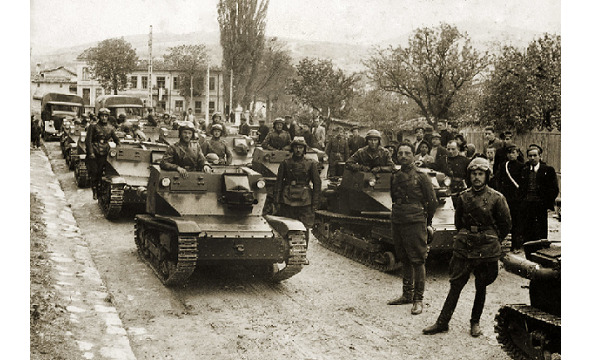
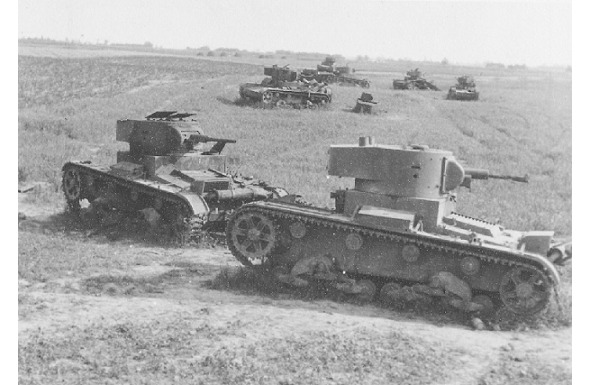
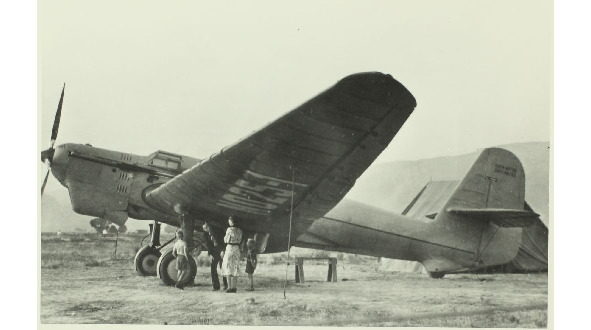
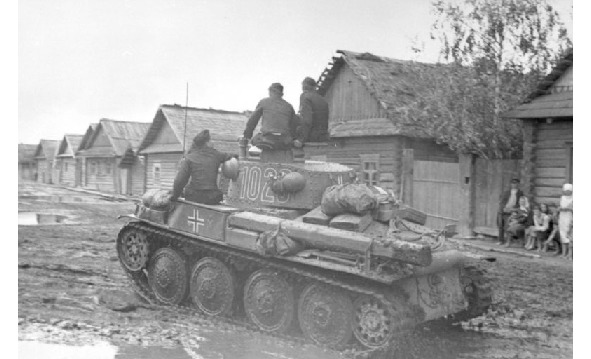
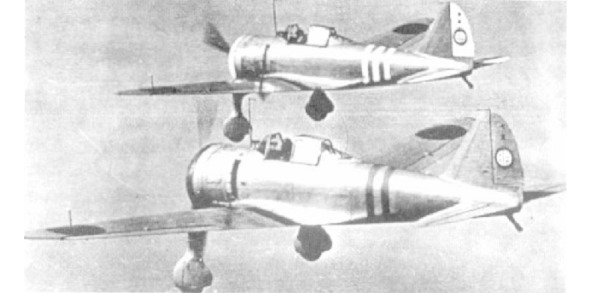
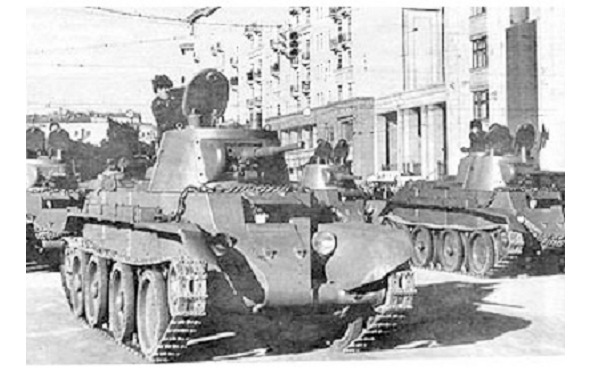
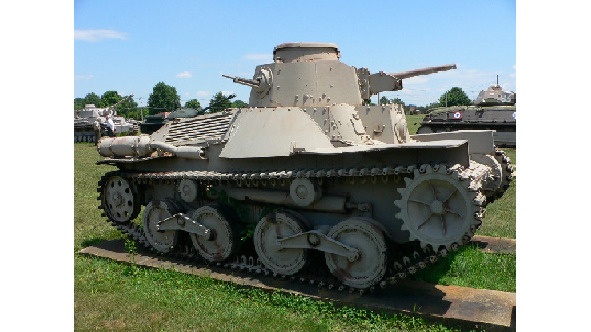
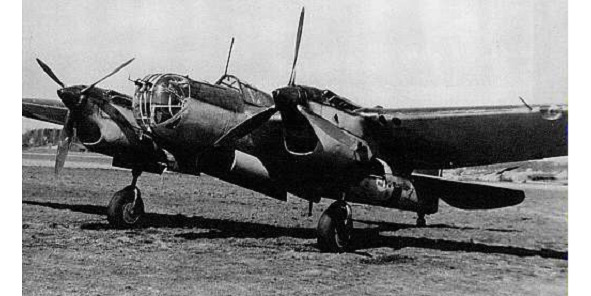
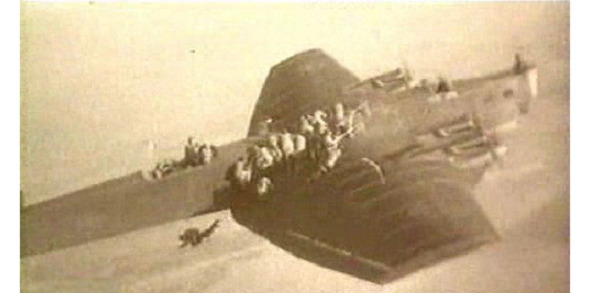
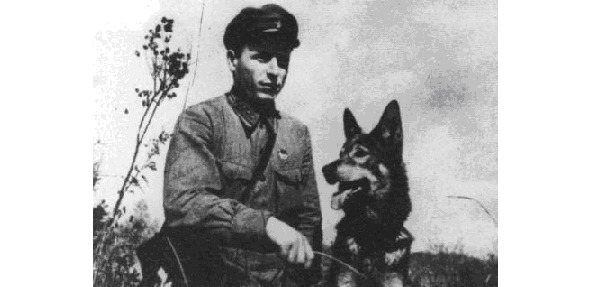
Armed conflict between Japan and the USSR in Halkin Gol
In the Japanese version, with Russian transcription, it sounds like «Nomon-khan jiken» – «The incident with Nomon Khan,» by the name of one of the local heights. Some historians consider fights at the river Halkin-Gol the Second Russian-Japanese war.


